On the Ground at the Biggest Machine Gun Shoot in the World
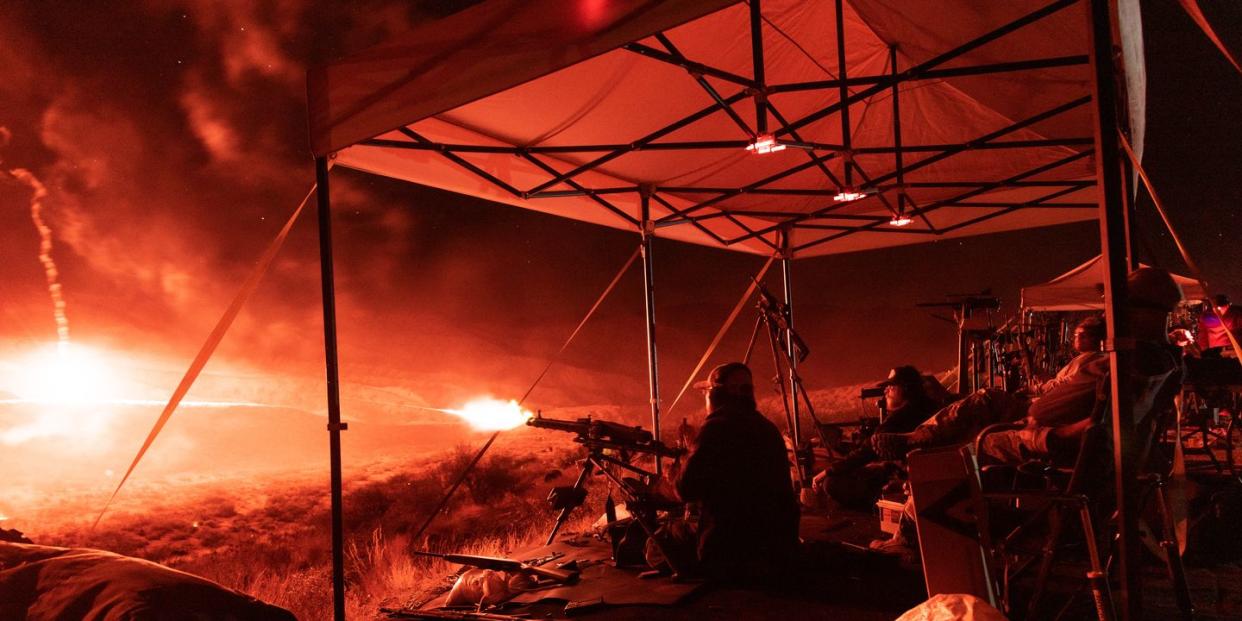
When I was at Big Sandy, it all seemed normal. Even the guy who had mounted a machine gun along with a giant disco ball on the back of his boat, which he parked on a trailer overlooking a set of hills that had been seeded with sticks of TNT attached to glow sticks so that if you shot one of the glow sticks, it would explode. Sure, why wouldn’t you do that? I thought. This was the Big Sandy Shoot, where, it often seemed, anything went.
Or nearly anything. The rocket launcher affixed to the top of the Hummer, the very first thing I saw when I got up to the quarter--mile-long firing line, would not be fired, I was assured. Mikey, one of the shooters from Arizona Armory (a largely AR-15-oriented gun seller and gunsmith in Phoenix), told me they’d get in trouble if they launched rockets, so they wouldn’t do that, at least not this weekend. Of the thousands of other guns, though, all laid out on tables and tripods and gun racks, attached to trucks and boats and armored personnel carriers and antiaircraft turrets, pretty much everything would be fired—to spectacular and more than occasionally absurd effect. I would get to fire the World War II–era Browning .50 caliber, the M16, the Smith & Wesson M76 9mm, the MP5, the Uzi, the shorty M16, the Beretta 9mm, the Tantal 5.45x39, the PPSh-41, the Thompson .45ACP, and the AK-47, to start. It was loud as God. It was constant. It was definitely excessive.
The Big Sandy Shoot, “the largest machine-gun shoot in the world . . . a uniquely American event,” is held two weekends a year, in March and October, outside Wikieup, Arizona, a remote census-designated place halfway between Vegas and Phoenix on the edge of the Mojave Desert. Shooters pay $325 for a spot on the firing line; observers who aren’t local pay thirty-five dollars at the gate. Shooters, staff, and observers come here from all over the world. At the fall shoot, I talked with folks from Belgium, Russia, Mexico, the UK, and Australia, to name just a few countries, and nearly every part of America. Many have come for decades; at least one guy I talked to had been to every single event over the shoot’s thirty-five-year history. The shoot originally began as a group of friends looking for a safe and private place to fire machine guns north of Flagstaff, before wearing out their welcome and moving twice, before the partnership fell apart. They eventually found new partners, incorporated, and purchased the land out here at Big Sandy. I was told that at least a few shooters have received a gun burial here, out on the range, their cremains attached to explosive sticks and shot with the guns they loved, then scattered in the air.
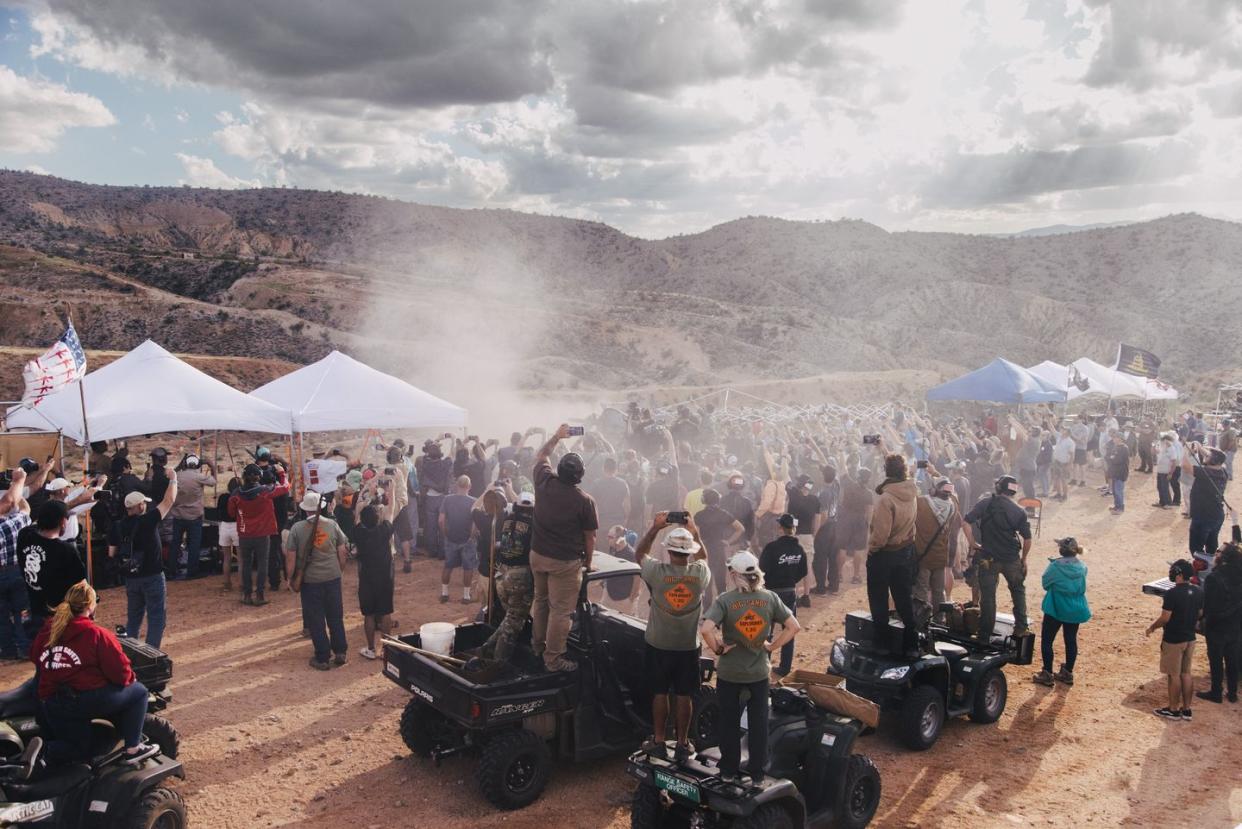
I’m not new to guns. I come from gun country in Michigan, and I live in gun country in Arizona, so they’ve been a constant presence in my life. And as an American man in his forties, I’ve shot some: I’ve shot them a lot in games and occasionally in life. For the past five years, I’ve been writing about my obsession with the 1987 movie Predator and the men who love it, which meant writing about guns, the violent sublime, and the weirdness of American masculinity. Like many Americans, I’ve seen machine guns shot onscreen a lot, but I’ve never shot a machine gun myself. I was here to close the distance and try to understand those who shoot and stockpile these guns.
Many of the shooters were very happy to let me fire their guns when I showed interest. In fact, almost all the people I met at Big Sandy were fairly to extremely friendly, even if their T-shirts seemed less than welcoming. I’d made the decision beforehand not to engage people about their views on the current president (“fuck Biden” was the prevailing sentiment) or on issues of gun violence and gun proliferation and who should have the right to own and shoot what and under what conditions, because they had a shitload of machine guns and I didn’t.
My machine-gun baptism began with checking into an Airbnb at Arcadia Farms, an “agritourist” farm about forty-five minutes away from the range. Upon arrival I found goats; two kittens; and two very fine, large white dogs who barked most of the night, apparently to discourage coyotes from raiding the chicken coop.
I had a hard time determining who was actually running Arcadia. At no point did I meet any of the three listed Airbnb hosts. I did, however, meet a lot of chilled-out folks, primarily in their twenties. They lived communally on the property, I was told, and were part of the Arcadian community, whatever that was. They exuded a refreshing Jesus-hippie feeling. Mostly I interacted with Elijah, sexy and intense, who seemed like their leader on the ground. Elijah explained that the farm was a self-sufficient intentional community: sustainable, rainwater capturing, marijuana friendly, and tucked away from the world.
While waiting for Jesse—the photographer shooting this story, who was to be my companion for the weekend—to arrive, I gathered from materials available in the communal dining room that Arcadia was nominally Baha’i and committed to some kind of weed-and-NFT-oriented world-domination plan, which was helpfully laid out on an elaborate flowchart of intersecting and very confusing ideas, all pasted onto a large whiteboard. One read, in all caps, arcadia is a “digital kingdom” which serves as a bridge culture between the old and the new earth. Other clusters featured digital passports = nft portfolio, or plans to invite “users” to “opt in” to a live game wherein nft crypto app passport and story are all connected, and you get the idea.

Having dropped our gear off, Jesse and I rolled out to Big Sandy. After driving for fifteen minutes on very rough roads and trucking through an arroyo that would be totally impassable after rain, we made it to the shoot. I can’t imagine how the RVs managed it, but they did, about a hundred of them, all parked up top on the shooters’ bluff. You could see them from the spectator camp in the valley below. Past the shooters’ RV site, on the edge of the berm, were the shooters’ tents, where the guns were located.
I should acknowledge that there is no credible civilian need for machine guns, aside from fear of government tyranny and the desire to defend yourself against other people with machine guns. But damn if they’re not cool! There’s a reason these guns so often appear in our movies and our video games as spectacle: They’re loud and big and wild and uncontrolled and extremely fun to watch and even more fun to fire. Watching a machine gun fire is watching technology unleashed. It’s the opposite of civil everyday society. As such, it’s impossible to look away.
We’d arrived just before the Friday-evening shoot. John Lennon’s “Imagine” was playing on a PA system as we parked. The local 4-H club had set up a kitchen to serve meals, and most folks were chowing down before it got dark. By the time the ten-minute signal sounded, it was completely dark. If you haven’t experienced dark in Arizona, especially in rural, way-out-in-the-hills Arizona, it can be disorienting. Not quite down-in-the-mine, absolutely black dark, but from the bluff, I couldn’t see any lights anywhere except for the glow sticks out there on the range. Then: Two minutes! Eyes and ears! (I made sure I had my eye and ear protection on.) And then the air horn, and we were off.
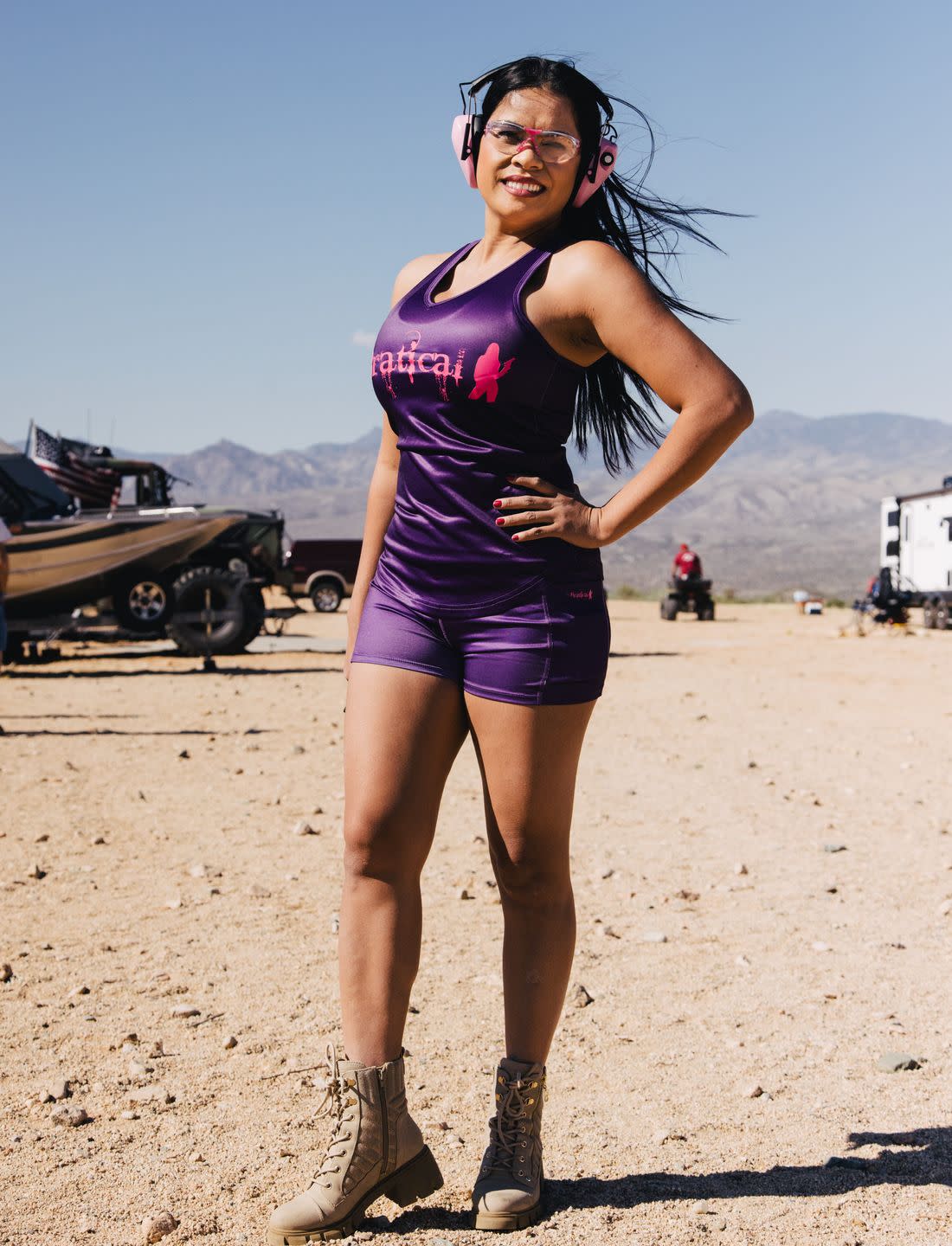
Everyone fired at once, at length. Hundreds of machine guns went off and would keep going off for the next two hours. A connoisseur could certainly pick out a Ma Deuce from an AK, but I couldn’t. It was just loud, loud, loud, loud, loud. Muzzle flash everywhere along the line. People yelling, too, as they hit their glowing targets and TNT booms echoed along the valley. These explosions never became less surprising or less fun. First we’d see the explosion, then we’d hear and feel its impact on our bodies. Hot brass shell casings cartwheeled out of guns and piled in knee-high mounds. The effect was awesome. Thrilling. Totally outside the bounds of normal human behavior. Whatever I thought about the need for these guns, they were here, en masse, and they were loud, and they were everywhere. The whole thing had an extremely strong what-the-fuck American energy.
I’d expected the noise, but I hadn’t planned for the lights. The glow sticks on the range were attached to sticks of TNT that would blow when shot. Most shooters were firing tracer rounds, so you could watch lines of light spray across the mountain, leaving crisscrossing neon trails in the dark. Then hundreds of red flares launched out over the entire range. Burning, they parachuted slowly down from the sky, bathing the whole scene in an apocalyptic glow, leaving trails of evil-looking smoke.
I should introduce Kenton Tucker, one of the two stars around which Big Sandy orbits. He’s the range manager, responsible for the safety and operations of all the shooters, as well as most of the weekend’s logistics. This is his day job—well, this and planning demonstration shoots for defense contractors. He also does appraisals and works for the sheriff’s department on the side. In his sixties, capable and unshowy, he was always very busy whenever I saw him during the weekend. He was suspicious of me and the media in general and told me they’d been caricatured badly in the past as a bunch of gun-toting wackos. Kenton’s primary goal was to keep the shoot safe and make it fun. Even amid what felt at times like total chaos, the chaos was all directed outward from the firing range. Up on the shooters’ bluff, inside the tents, things seemed very much under control. Observers park down below and are bused up to the shooting line. They are not allowed in shooters’ tents unless invited. Big Sandy has a lot of staff, including fire- and range-safety guys, a medic, the pyro experts, and the explosives technicians.
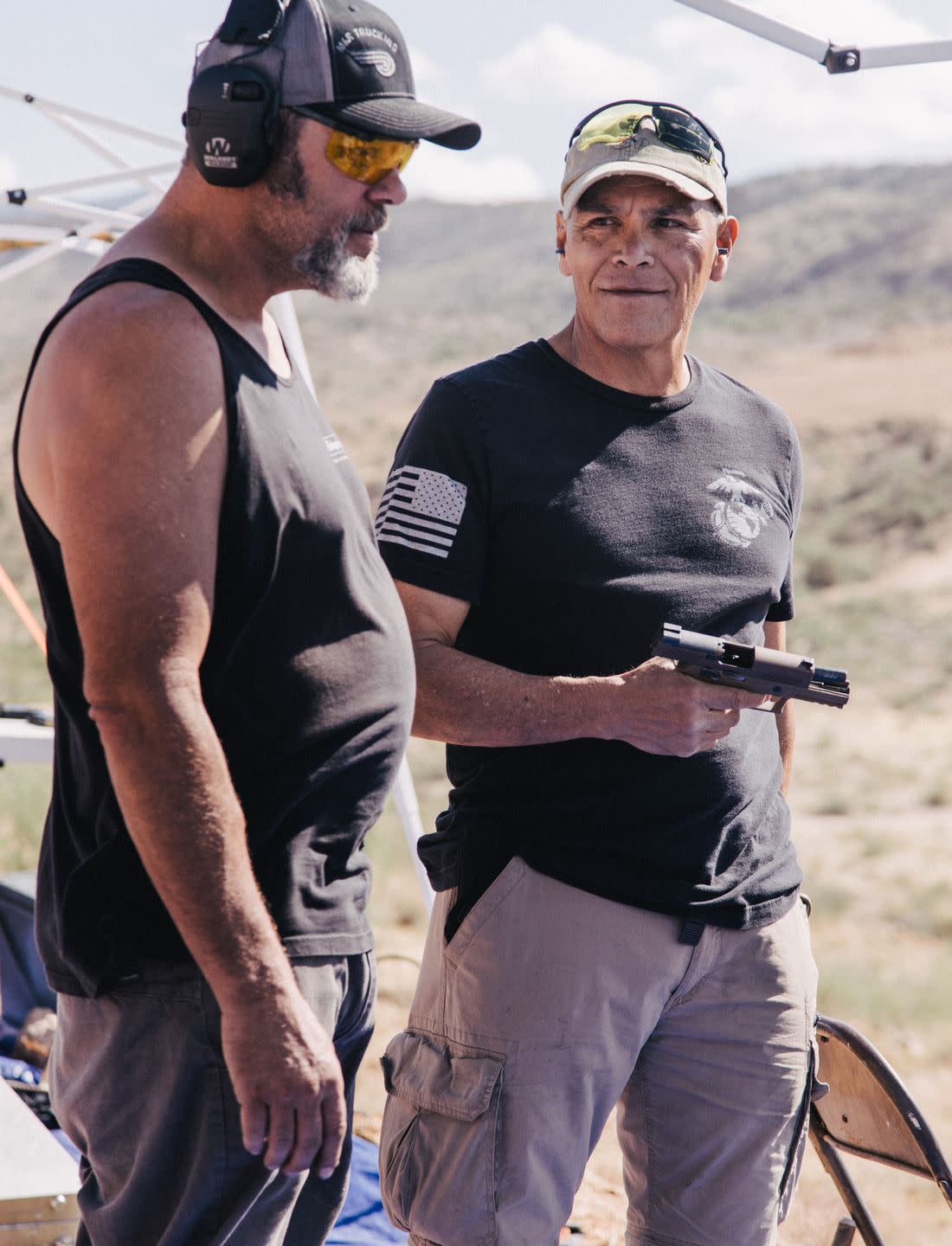
Anytime you’re shooting guns of any sort, Kenton told me, minor accidents are inevitable. These guns are like any machines, which is to say imperfect. In many cases, the guns are antiques dating back a century or more, and they shoot live ammunition in various states of age, decay, and unknown provenance. Misfires aren’t uncommon, and just before we got there, a gun had blown up and injured the shooter, who had to be rushed to a hospital. A close observer took a piece of shrapnel in the shoulder; the next day, I overheard him telling the story to a kid. It wasn’t that big of a deal, Kenton told me: They’d saved the shooter’s hand, and he was okay enough to return to the shoot the next day, where he promptly got back to shooting. That kind of accident, Kenton explained, was very rare. Over thirty-five years in operation, they have never had a fatality.
This seems like a major achievement, given the sheer number of guns shooting a shitload of live ammo into the side of a mountain. It was hard not to feel awe. What would it be like to be on the receiving end of fire from this army? It was a show; it was a lot. And this was only the first night of the shoot. When the session ended at 9:00 p.m., Jesse and I headed back to Arcadia for the night, more than a little dazed.
The next morning, I woke to the sound of four goats on my patio. No one else was up, so I took some surreptitious pictures of the Arcadia Farms master-plan whiteboard in the dining room. The plan was convoluted, to say the very least, and some of the stand-alone components didn’t really sound like anything at all. For instance, agenda: “eo” 486 member or 666 chip. One box explained: “The story is an ‘exit’ from the old world and a ‘way’ into the new world. only those who make the shift can board the ship. Are you in or are you out? there is an alternate universe.”
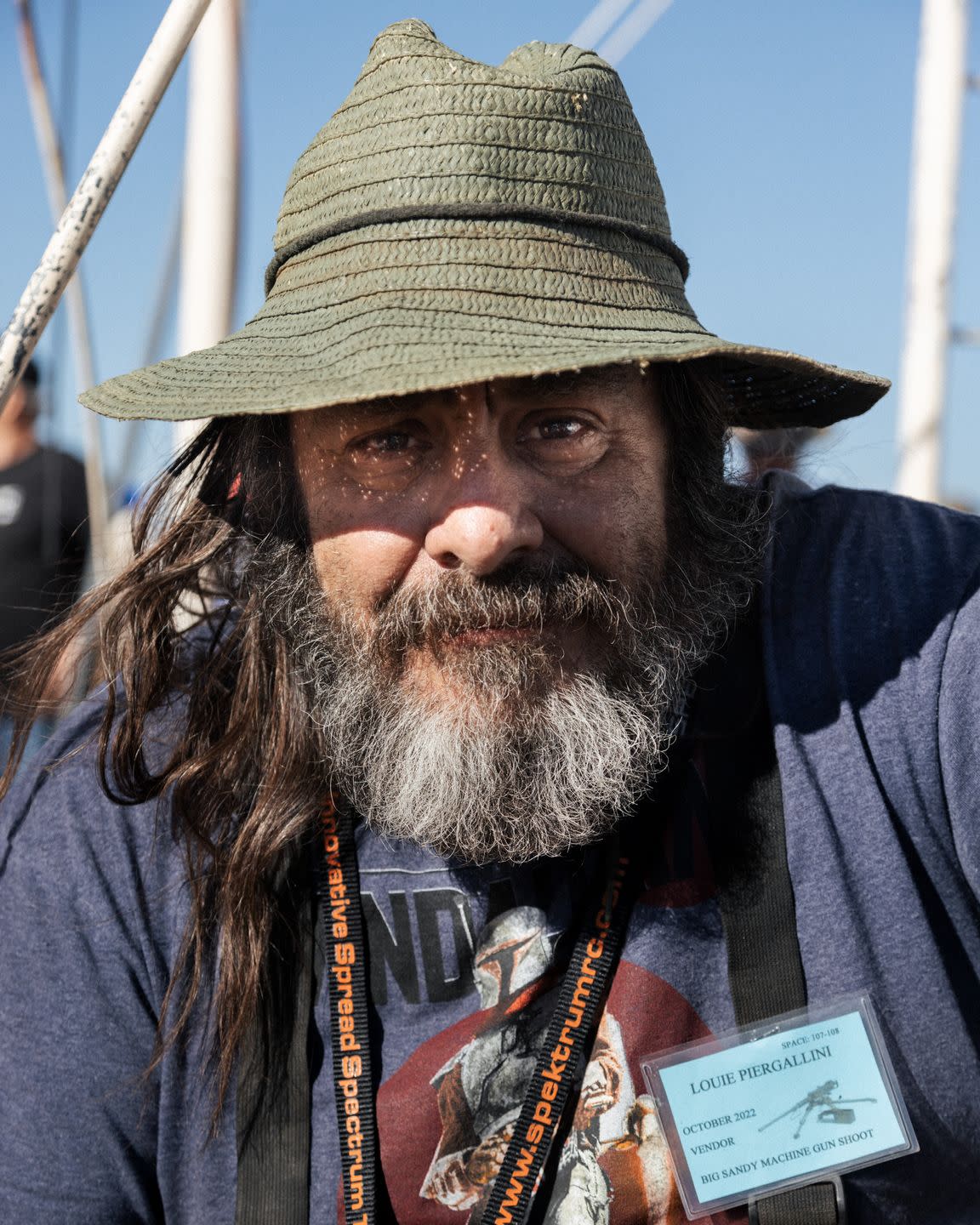
As I puzzled over the details, Jesse came in. We headed to the mandatory shooters’ meeting, where we were to be introduced so that the shooters would get used to us.
We stood up and waved as Kenton instructed the shooters, “Don’t hurt them. They’re okay. If they ask dumbass questions, just act like they’re okay,” which was the best we were going to get. After they dispersed, Kenton pointed out a guy in a lawn chair and told me he was a regular. This would be his very last shoot because he was dying, Kenton said. But he’s here, I wanted to say. Why is he here, of all the places he could be?
One of the amazing things about Big Sandy is that for the most part, shooters leave their guns and ammunition out in their tents overnight. Considering the cost of these guns (someone quoted me $15,000 for a Thompson machine gun, which is by no means on the higher end; I found a minigun for sale online for $180,000) and the cost of the ammo ($6,000 to $8,000 for the weekend was typical), not to mention the emotional energy the shooters invest in their guns, it seemed an enormous act of trust. This is all to say that the community is tight-knit. Almost everyone knows almost everyone. As shooters told me all weekend, they were like family. Also, in a scenario in which everyone is heavily armed, only a real idiot would tempt fate.
Here I should pause to note that just two weeks before the shoot, one of my colleagues at the University of Arizona was murdered by a gunman (allegedly one of his former students) after he had finished teaching a class only one building over. My class had ended a couple hours before, so thankfully I wasn’t there. Instead I heard the details as they filtered out through university alerts, rumors, and incomplete official statements.
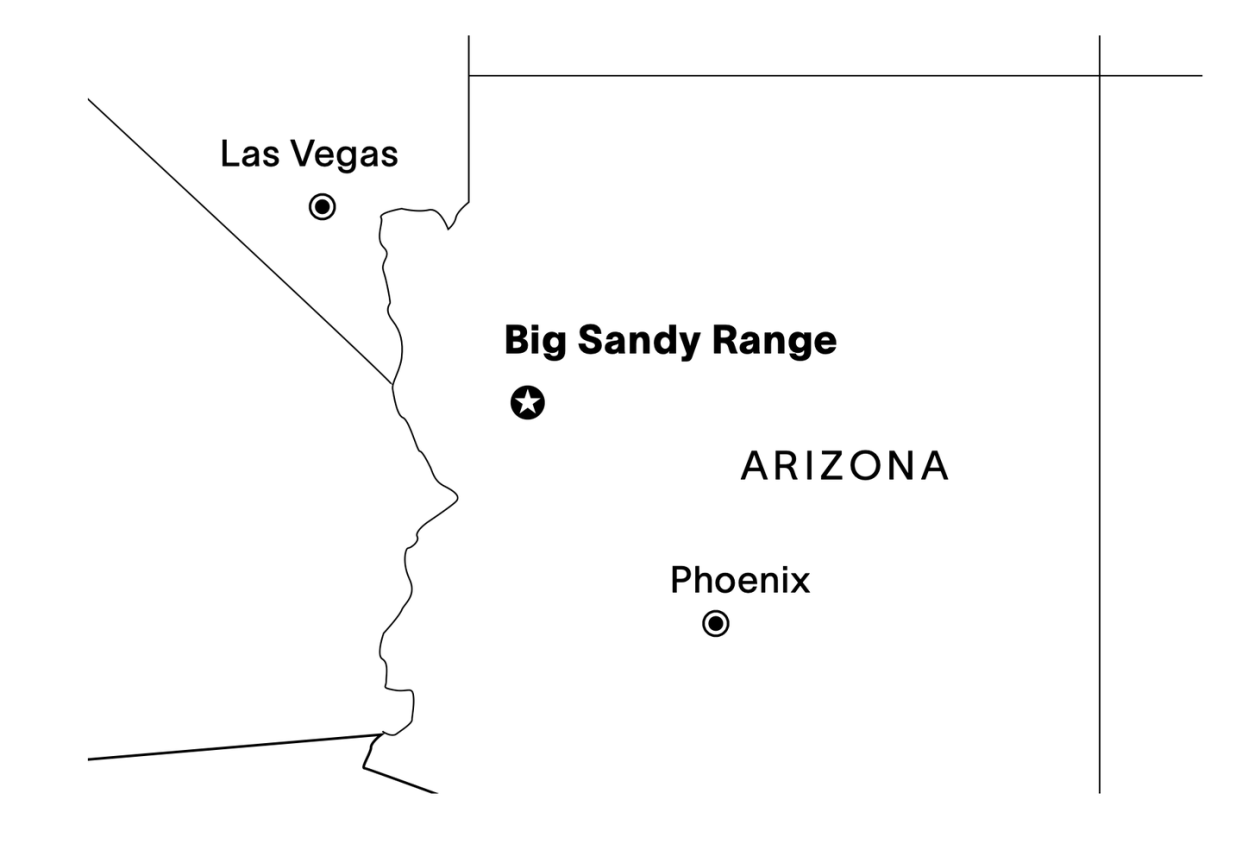
You don’t need me to tell you that shootings, even mass shootings, are now a depressingly regular occurrence in America. According to the Gun Violence Archive, which defines a mass shooting as a shooting with four or more people injured or killed, not including the shooter himself (and it’s nearly always a himself), this country registered 558 mass shootings in 2022 up through the weekend of the October Big Sandy Shoot, en route to an all-time high by the end of the year. Compare that with 417 in 2019, which was the first time we broke 400. Now each year the number rises. The murder of Thomas Meixner did not qualify as a mass shooting, so it wouldn’t register on that list, but it was particularly horrific to me because of its proximity.
As details came out about the murder, I became even more horrified by how many obvious warning signs (basically all of them) were present; either they were legally or administratively inactionable or they were outright ignored, as news coverage and a faculty report later revealed. And yet the suspect, a nutcase described by his neighbors as a “supervillain,” got a gun, came on campus, (allegedly) killed his former professor, and fled. He was apprehended close to Gila Bend driving toward Mexico, but I didn’t feel any safer. So the thought of going up to the Big Sandy Shoot this weekend felt particularly freighted, as I was still receiving emails about memorials and listening sessions and active-shooter trainings.
For the day shoot, the staff had seeded the field with two different kinds of explosive charges: the TNT sticks and even bigger barrels of ANFO (ammonium nitrate), or, in other words, fertilizer, the kind used in the Oklahoma City bombing. The ANFO made even more spectacular explosions than the TNT, causing giant plumes of smoke. Eventually, everything started to smell of gunpowder and ANFO.
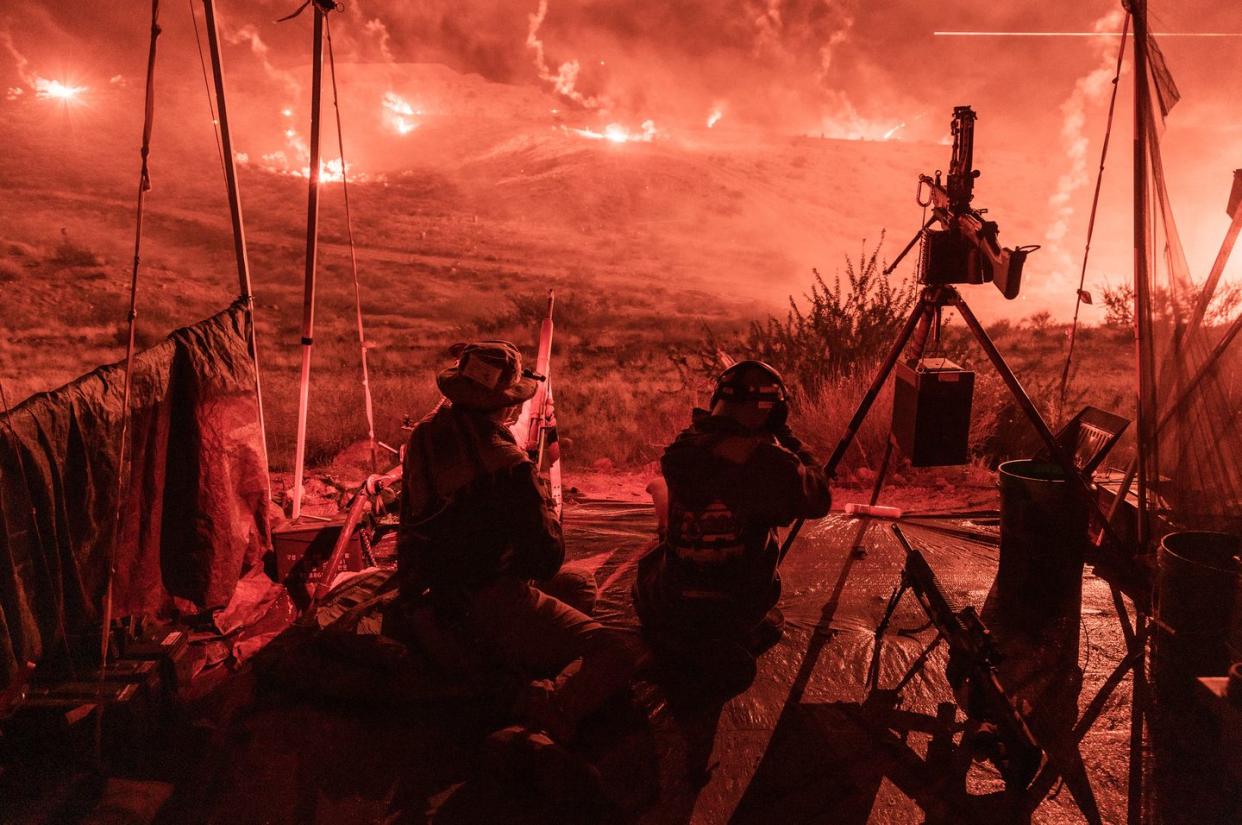
After half an hour of this, I checked out from the actual shooting and found myself talking to the shooters. I met quite a few historical hobbyists like Andy, a dapper sixty-something Englishman. He was very happy to explain the historical context of these guns, why they were cool, and how they worked. Then there were the anarchic Johnny Knoxville types, like Ninth Ward Nathan and Louie, a big, scruffy, very sweet bearded fellow rocking a Boba Fett shirt. He was among the friendliest people I met. He explained that the reason he came here was not the guns but the people: “The majority of people are scumbags, and it’s just the exact opposite here. They’re good people. They have to be, because they’ve had FBI background checks and all that. They’re just good people with an affection for history.” Nathan agreed and told me he was part of a big group that traveled across the country to the different machine-gun shoots, trying to figure out which ones are fun and which ones suck. This was the best place, he told me. “Like that parachute-flare barrage last night? We planned that shit for years! Because one of the guys who runs the range hates fucking flares. So we got literally $5,000 in flares that we just went and handed out to everybody. It was pretty goddamn impressive, in my opinion!”
Of all the types of shooters here, I connected with these guys the most. Their enthusiasm was familiar and contagious. They showed up to the shoot not just with guns but with cannons, which, even by the standards of the shoot, seemed way bigger than anything any civilian ought to own. They often seemed to be having the most fun by far, cackling and laughing. The night before, when Nathan heard it was my first time here, he got super hyped to help me “do some scary shit,” as he put it. He brought me over to the Big 37, the M3 anti-tank gun, circa 1942. “It’s Jay’s,” he said, “and you’re gonna shoot it.”
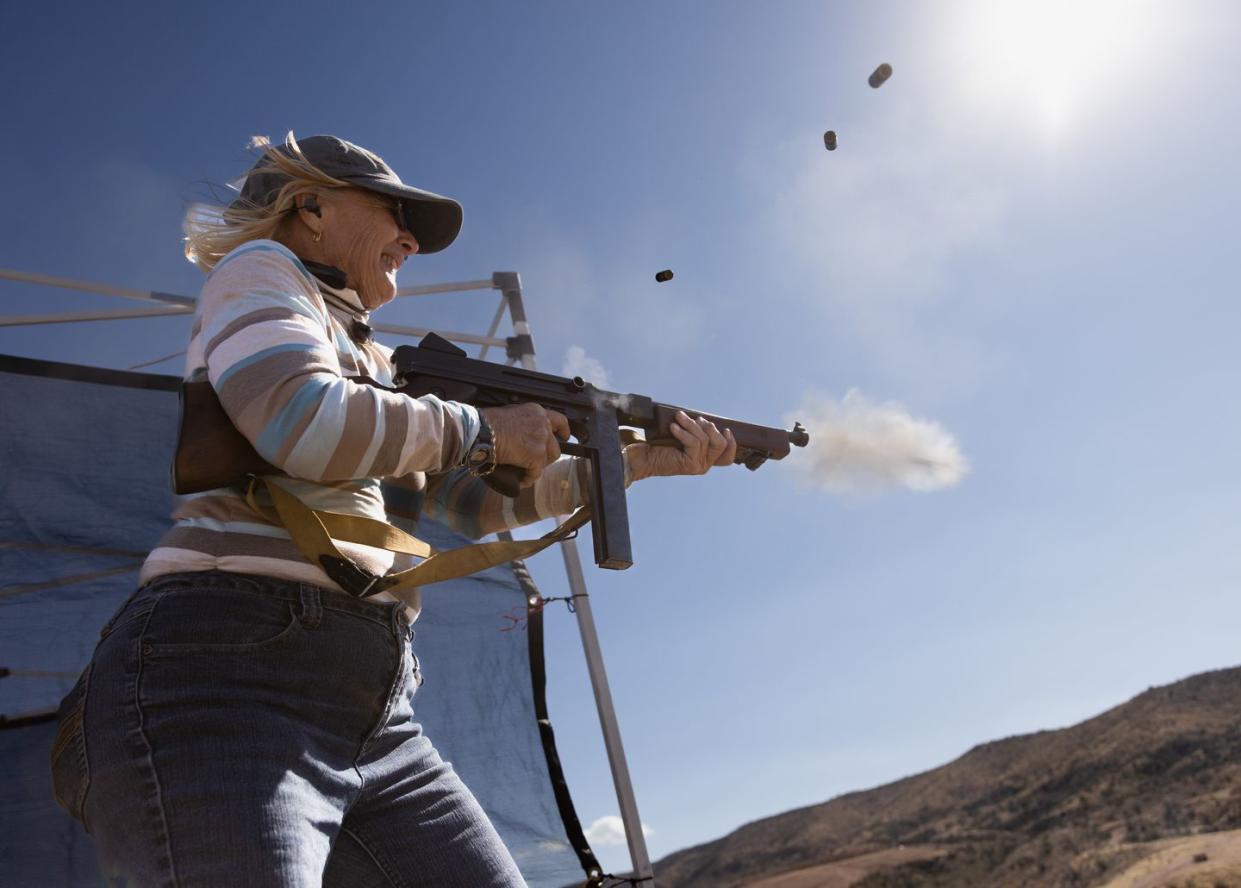
As Jay—a laid-back guy who I would later learn is an engineer at NASA—explained how to load the gun, Nathan told me it used entirely homemade ammo, which I think was supposed to be reassuring. Jay showed me how to aim it, but since you’re shooting in the dark, it doesn’t really matter. You sit here. Make sure nobody’s behind you, because when it fails, it fails backward. You make sure it’s clear. You yell “fire in the hole,” you pull this bolt, and boom. So I got to do the scary shit, and goddamn! It was big and loud and exhilarating. It literally blew off my press pass, which I wouldn’t find until the next day. Nathan said, “That ruled, right?” It did.
Others were real happy I was here, because as an observer named Matthew explained, it’s important to expose the public to this stuff, let them see what’s actually going on versus what they see on TV or in video games. He was here with his ten-year-old son, who’d just fired an AK-47 for the first time. I’d just shot that for the first time, too, I told him. It was hard; it really kicked. How did he handle it? The boy showed me his battle wound, as his dad called it, the mark it left on his young body.
I should note that Thomas Meixner was not murdered with a machine gun; he was shot with a legally obtained 9mm handgun. Many here reminded me that in fact no one uses machine guns for mass shootings. This is true, but that’s because unlike semiautomatic guns, machine guns have been tightly controlled since 1986. Machine guns must be registered with the Bureau of Alcohol, Tobacco, Firearms, and Explosives, and to purchase one, unless you have a Federal Firearms License or need it for military or law-enforcement use, it must also have been manufactured before 1986, the year in which the Firearm Owners’ Protection Act passed, limiting civilians’ ability to buy machine guns made after that date. As a result, it’s difficult, time-consuming, and very expensive to get a machine gun in America, even in Arizona, where residents can buy an assault rifle or a handgun and ammo at a gun or sporting--goods store with a ten-minute background check and carry it on the street without registration, training, or a permit.
The air horn signified the end of the morning shoot. It was a relief to take off the earmuffs and grab some food. I walked up on the bluff a couple hundred yards and sat on a bench there for a while. It felt good to be silent. For all the hundreds of thousands of rounds fired into the hills, from up here it looked as if they had no effect at all.
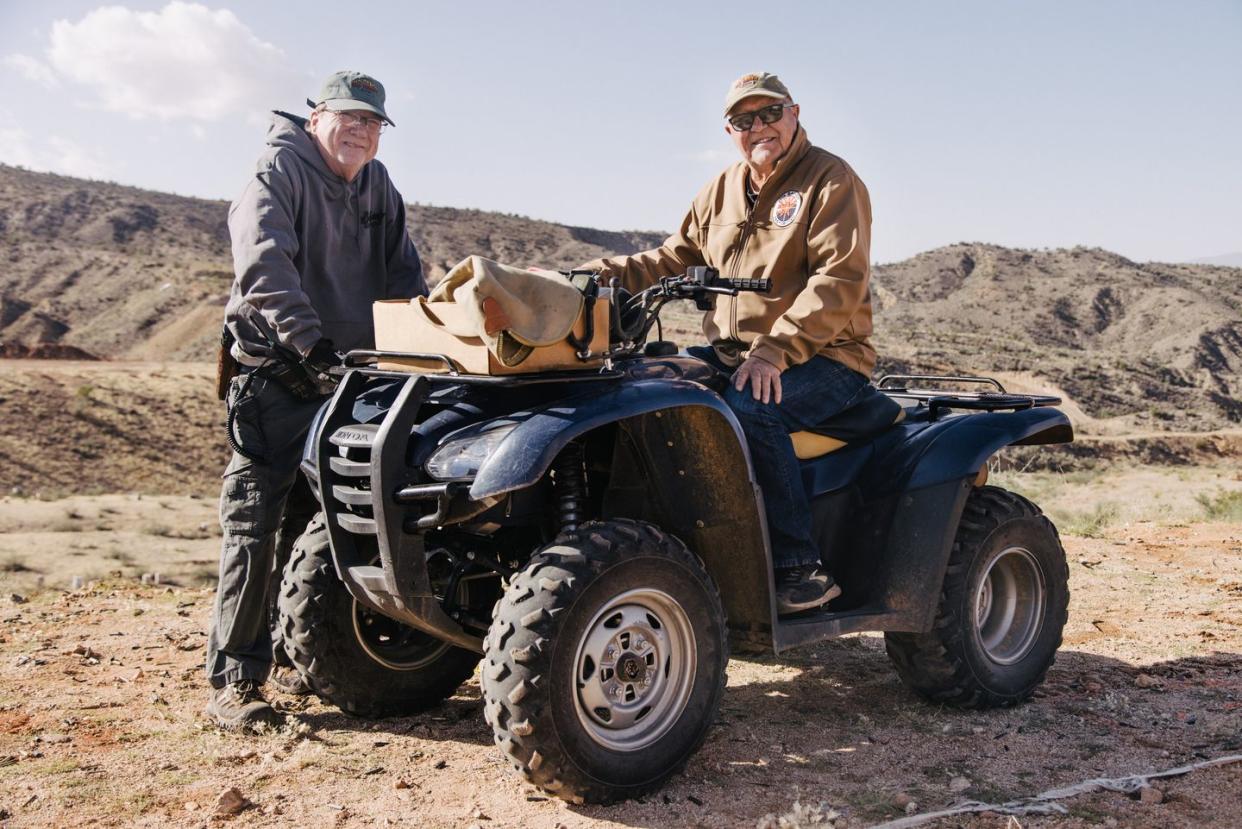
I finished my lunch and talked with the other half of the Big Sandy leadership team, Ed Hope, a retired schoolteacher from Flagstaff. If Kenton was flinty eyed and skeptical and stern, the kind of guy you’d want in charge of logistics and safety when you have a ton of guns being shot into a mountain, Ed was welcoming and relaxed, a softer front end of the organization. He’s surprisingly realistic about (but totally opposed to) most of the shooters’ politics. He’s a liberal Democrat—probably the only one here, he told me. Ed’s an NRA member, but he hates the organization; he thinks Wayne LaPierre should be in jail. But like everyone here, he likes guns, and he likes machine guns, and he likes shooting them, and he likes having the right to own and shoot them. He’s proud of being part of this family, even if most of them are “frothing-mouth, stiff-necked Trumpies.”
Ed said maybe he was a hypocrite for taking their money. I wasn’t so sure. Though our current political climate has rendered positions on Second Amendment rights and who should take responsibility for gun violence predictably partisan, these ideas weren’t contradictory for Ed, nor are they entirely contradictory for me. We find ourselves in a bizarre moment in America when many of the people who want so badly to own as many guns as possible seem unconcerned with the competence, training, and mental health of those who want to buy and use them. It’s equally bizarre that many of those who are categorically opposed to guns have never held or shot one in their life and so often have no frame of reference for how they might and might not be useful or appropriate. It’s never seemed contradictory to me to preserve the ability of adults to own and use guns—even machine guns—and to try to ensure that those who own them are responsible, know how to use them safely, and aren’t likely to use them to commit acts of violence in schools or in nightclubs or at concerts or after classes on university campuses.

I don’t hear this position articulated often, so when Ed told me that the only people who can fix school shootings are gun owners, I was surprised. The crux of his thinking was that we need strict gun licenses and major penalties for anyone using guns in crimes. That was the key: We have to place the responsibility on the gun owner or else nothing’s going to get better. Whether or not this seemed likely in America, much less in Arizona, the break was over, and it was time to shoot again.
Kenton gave me a ride down the line to point out some of the most interesting guns present this weekend. I have to admit, some of the nuances were lost on me. We ended at the cannons and, at the very end, the machine gun mounted on the boat with the giant disco ball. Kenton said, “Well, this guy, he had a pipe dream. This is one of these things before he dies, he said, ‘I want to shoot off of my boat,’ and I said, ‘More power to you, bring your damn boat out, no problem.’ ” And here it is, all the way on the end, past pretty much everyone else. Why you would want to do that was not a question Kenton or anyone else asked, and it would not be answered this weekend. I hung around the boat many times in hopes of asking the owner, but I never saw anyone there.
It will not shock you when I note that Big Sandy is predominantly male, but I encountered more women than I had expected to. At one tent, a shooter named Barb was blasting through magazine after magazine with her tommy gun. When she saw me watching, she asked if I wanted to shoot it. Naturally, I did. It was a blast to fire, very cinematic gangster, with shells spraying out in an arc. Very kindly, she emailed me a photo later. John Woo would have been proud of the shot we got, a slo-mo of raining brass.
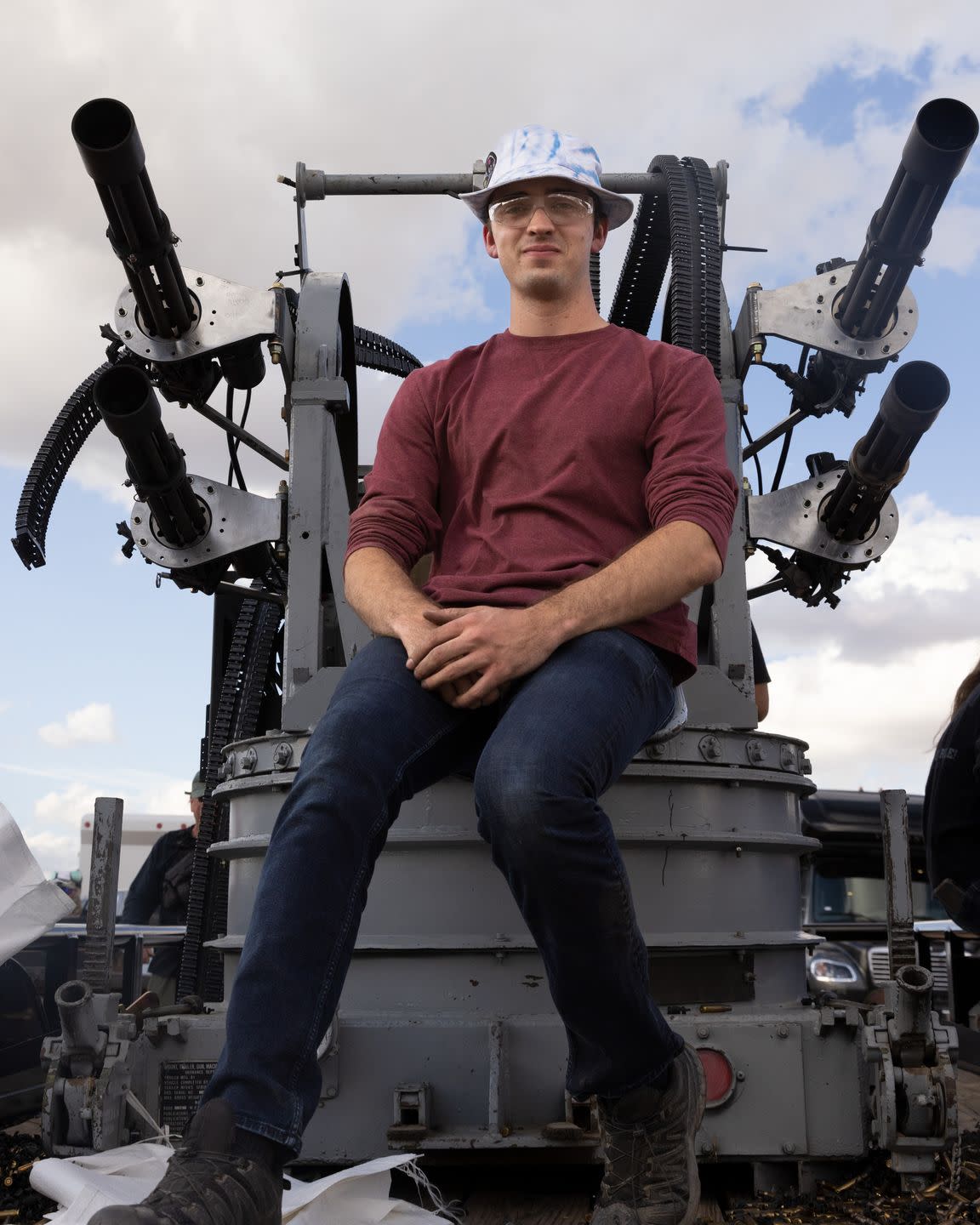
I thanked her and saw that a crowd had gathered around the space reserved for Dillon Aero, a weapons manufacturer in Scottsdale. Dillon is best known as the maker of the M134D minigun, a modern version of the big gun from Predator (itself a scaled-down version of the Vulcan cannon mounted on American fixed-wing aircraft). Word had spread that Dillon was coming up with something special for this year’s shoot. Some years ago, Mike Dillon, the company’s founder and a longtime Big Sandy shooter, had mounted two miniguns together and shot it at Big Sandy. His lifelong dream was to mount and shoot not two but four miniguns on a turret, but he died before he had the chance. The big news this weekend was that the Dillon team had built it, and they were going to show up with the quad that Mike’s grandson George would fire. The culmination of the gunmaker’s dream was going to happen today, which was why many of the shooters had come to watch it be assembled.
The Dillon team now had the quad, in all its glory, mounted on a World War II–era M45 antiaircraft turret. It looked like something on the Death Star, with its four ammunition belts each draped and curled precisely into the ammo boxes to minimize misfeeds and jams. We all watched George, a skinny twenty--something, climb into the front of the turret, perched between the four guns from his grandfather’s dream. The rest of the team adjusted the electric connections and the belts.
The crowd had by now at least tripled in size. Almost nobody was still shooting on the line—instead, everyone was here. Like most of the folks in the crowd were, I realized I was holding my breath, and I exhaled only once the quad started firing. It sounded less like a gun than like four wood chippers working simultaneously. It was absolutely crazy to watch: a cloud of ammunition and smoke. It made a powerful whine and blur, shooting far too fast for us to see the barrels spinning. George shot it for just two seconds in a burst, then paused and shot some more. It turned and shot again, for longer now. We all watched the bullets tear into the mountain; a line of dust burned across the hillside. Empty shell casings cascaded out of the side of one of the guns, too fast and too many to count. The crowd went nuts with screams of excitement, accomplishment, high fives, tears.
As predicted, the Saturday-night shoot was wild. As Ed told me, what they did was a Big Sandy invention: They get fireworks—the biggest kind, obviously, the kind the pyro professionals launch into the sky on the Fourth—they put them on the ground, and the shooters shoot them. So this night, nobody was messing around with flares. It was pitch-black except for the glow sticks. When guns started going, the ground fireworks show began. This was even crazier to watch—hundreds of guns raining fluorescent tracer fire on the mountainside, and when someone hit one of the fireworks, it would explode on the ground and burst into the sky. It was undeniably beautiful; it felt like a show. This went on for two hours, then it was over, the sound and crowds dispersing. Jesse and I ducked back out to the Airbnb and our thoughts and silence.
Saturday night was wind and rain, dogbark and cold. We were up early the next morning, before the final morning shoot. Elijah was up and had made a pot of coffee, which was reassuring. He asked how the shoot was, and I told him. He told me he had some guns. Not machine guns, of course, but an AR-15. As we talked, the number started going up every time he referred to his guns. It was three AR-15’s, then it was five, and some sniper rifles, and some pistols. He told me about the plan for the compound: They were prepared for the end of civilization, he said. This was the contingency plan. To start with, they were going to bring all the tractors into a circle to limit access, so people couldn’t penetrate the compound. The men here at Arcadia would get the assault rifles and pistols; they were trained in close combat. The women would go up on the ridge with the sniper rifles, as they were trained to pick people off as they got closer.
Who did he think was coming for Arcadia? Anyone, he said. Things are going to go to shit in 2024 if the election doesn’t go to Trump, he told me, and society’s gonna crumble. The first thing he and his people are doing is getting their guns. Because according to Elijah, the “county boys”—it was unclear which boys these are, exactly—are gearing up to blow the Hoover Dam, so anyone from California or Vegas will have to go around the Grand Canyon to get to Arcadia. Then the county boys destroy the airport, too, so that they and the Arcadians are isolated and armed. The entire police force, everybody who works for the county, has a contingency plan, he assured me, which makes him feel safe. They’re going to be running this fucking shit and they will be the law.

The more he talked, the more grandiose his claims became. I couldn’t tell how much of it was Elijah bullshitting, or if any parts of what he was saying even represented something like actual plans. Was he just showing off? All I knew was that everything seemed to be escalating rapidly and I was starting to feel a little tense. As the whiteboard behind him reminded me, nothing here made complete sense, which did not ease my mind. At no point did anyone explain what the 486 was that the board described as “conflict resolution technology—theory of everything—North Star for All.” Or what the “greatest transition on the face of this planet” alluded to. And what was the “line in the sand” Arcadia drew between the “faithful and the infidel—by light and darkness they shall see the separation clearly”? I considered asking but didn’t want to reveal myself as not one of the faithful.
No one hopes for it, Elijah told me, but we want to see the babies in this community grow up. We need a reset. It would be nice if there was some kind of September 11 on a worldwide scale for the whole world. This pandemic was really close to that. But the idea would be to create one fake alien invasion, and how easily can they do that shit now? Blue Beam drones. The potential for manipulation is too high now to think that someone’s not going to do it. All they have to do is create one spectacle on every continent: over Rio, over New York, over Moscow, over Beijing. The one unifying threat to do away with national sovereignty and stuff like that. Total annihilation. Mad Max–style dystopian collapse of civilization.
Elijah was really rolling now and began referencing online conspiracy theories: I’m the lizard people, the queen, the reptile. They got the children underground. And the fucking shit’s true. It’s not a conspiracy anymore. It’s fucking true.
I was thankful that just then a couple other Airbnb guests interrupted Elijah’s monologue, telling him that there was some cut melon they left behind in the fridge. It was clearly time for us to leave, so we said our goodbyes and thanks. Elijah said, “Awesome, you guys know who we are. You guys bring your families out here. When you start to see all the happening, bring some of those machine guns that you guys see out there as well.” I said absolutely, we would, thanks for the talk and the hospitality, and we quickly proceeded to get the hell out of Arcadia.
After escaping without getting 666 chipped or becoming 486 members, going back to Big Sandy felt like returning to sanity. On the range, the energy felt oddly restorative. Here people seemed to genuinely like being around one another. They all identified as machine-gun people, and if some of them were crazy, at least they knew that they were crazy and could admit it, and they got to exorcise that crazy in bursts of fire and TNT and ANFO and ammunition and friendship and family and cannons and disco balls all weekend twice a year. As Mike, a shooter with a relaxed demeanor, told me, “We’re all nuts, dude. It’s a lot.”
This article appeared in the March 2023 issue of Esquire
subscribe
Everyone told me that the Sunday-morning shoot was a winding down, and it was true. At least half the shooters’ spots were vacant, and those who were still shooting were shooting less and less, intermittently cleaning up their brass and packing up. It had a melancholy feeling, everyone contemplating going back to their non-machine-gun-shooting lives, where their shared passion was something they probably couldn’t talk about much. I ran into Ed, who told me that many of the staff members were former students of his, recruited over the years he taught. Listening to him talk about the shoot reminded me that for many of the shooters, machine guns are more than a hobby: They are a core identity, the kind that they only get to let out publicly twice a year.
Here the shooters are bound by their shared passion. They’re bound by doing this thing with one another once or twice a year for many years, even as the rest of the world doesn’t understand it. They get married here: Big Sandy has hosted weddings. I met a guy who proposed to his wife here, and this year they brought their toddler to his first Big Sandy Shoot. The mom, a long-distance shooter, told me her son was soothed by gunfire, that he’d actually fallen asleep at a pistol shoot before. I saw two men holding hands while shooting. They’re bound by the guns; they’re bound by the explosions; they’re bound by the misfires and the shrapnel and the pyro and the close calls. They’re bound by the way others think of them, or the way they imagine others thinking of them, and they’re bound by the cost and the laws and the paperwork and the history.
I was glad to have come to this weird, beautiful, fucked-up weekend in America. And I was glad to leave, even if I never got to see the guy shoot the machine gun off the back of the disco boat or ask him why. I don’t know that there’s a satisfying answer to that question anyhow, except for “Because we can.” Because America. Because men. Because freedom. Because it feels better than anger. Because fun. Because obsession. Because history. Because friendship. Because family. Because batshittery. Because joy.
You Might Also Like
